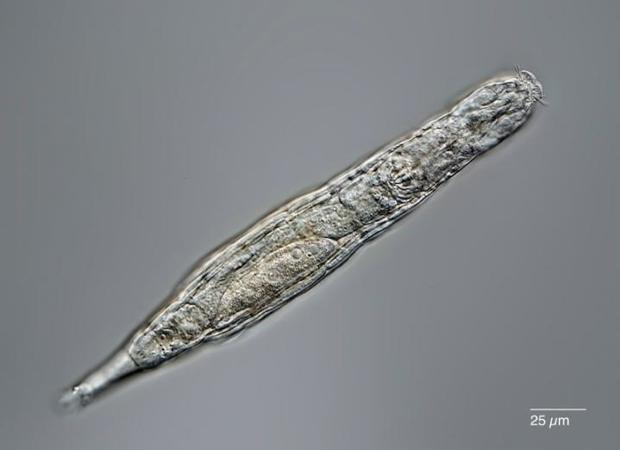A lot has changed on Earth in just the last few decades, but for a recently revived microscopic creature, it has tens of thousands of years to catch up on.
In a new study published this week in the journal Current Biology, researchers report the surprising survival story of a bdelloid rotifer, a tiny freshwater creature that is common all over the world. The multicellular animals can only be seen under a microscope, but they are capable of surviving through drying, freezing, starvation and low oxygen.
Now, researchers have learned that these animals are not only resilient, but they can persist for extreme lengths of time — at least 24,000 years — in Siberian permafrost. Earlier evidence suggested they could survive for only a decade.
“Our report is the hardest proof as of today that multicellular animals could withstand tens of thousands of years in cryptobiosis, the state of almost completely arrested metabolism,” study author Stas Malavin said in a statement.
- “Completely preserved” ice age bear mummy emerges from Russia’s melting permafrost
- Releasing herds of animals into the Arctic could help fight climate change, study finds

The Soil Cryology Lab in Pushchino, Russia used a drilling rig to collect the minuscule organism from nearly a dozen feet below one of the most remote Arctic locations. Researchers then deduced its age using radiocarbon dating.
After the organism thawed, it was capable of reproducing asexually using a process called parthenogenesis. Repeating the freezing and thawing process dozens of times, researchers found that the animal innately performs a process to protect its cells and organs from the formation of ice crystals at extremely low temperatures.
Finding this characteristic in a multicellular organism pushes the limits of what scientists believed was possible.
“The takeaway is that a multicellular organism can be frozen and stored as such for thousands of years and then return back to life — a dream of many fiction writers,” Malavin said. “Of course, the more complex the organism, the trickier it is to preserve it alive frozen and, for mammals, it’s not currently possible. Yet, moving from a single-celled organism to an organism with a gut and brain, though microscopic, is a big step forward.”
Rotifers now join the list of organisms that can seemingly survive indefinite periods frozen underground, including many single-celled microbes, 30,000-year-old nematodes, mosses and some plants. Mammals that are long-dead, but still well-preserved, have also been found in melting permafrost that is succumbing to climate change, including a bear from the ice age and an 18,000-year-old puppy.
The new findings appear to bring more questions than answers. Scientists aren’t sure exactly what allows these organisms to survive in ice for even a few years, and it’s even less clear if the difference between a few years and several thousand is significant.
Researchers hope that further studying Arctic samples will bring new insights on preserving the cells, tissues, and organs of other animals — including humans.







